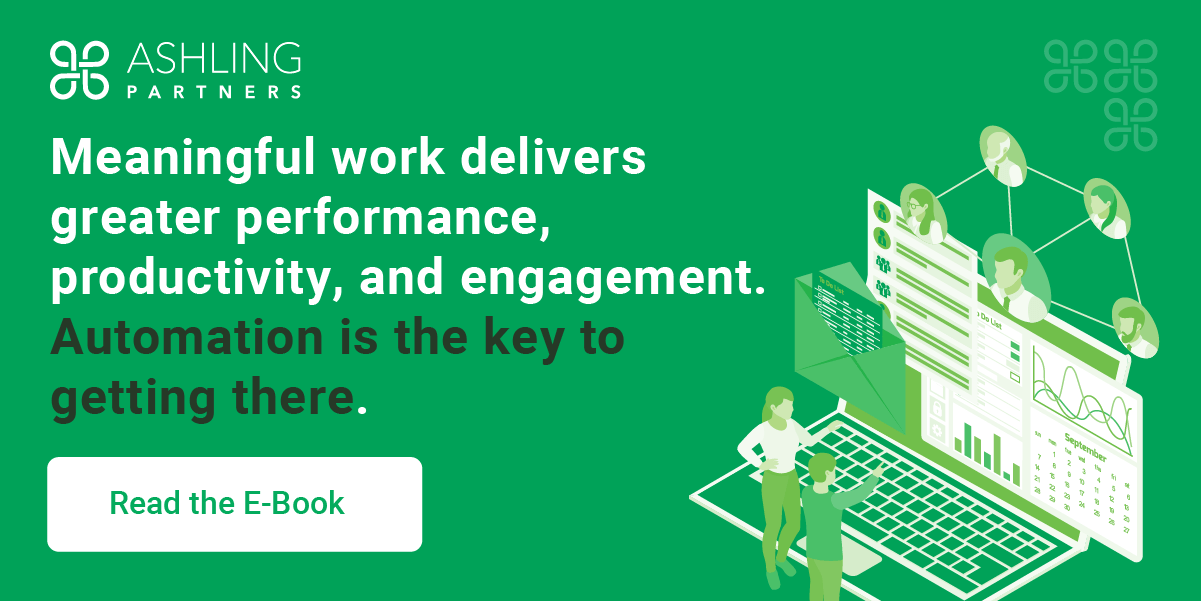In healthcare, much of the discussion about satisfaction revolves around the patient experience. With such an intense focus on patients, employee satisfaction is often an afterthought. However, it is just as important.
If healthcare workers are disengaged, it impacts quality of care and so much more. The healthcare industry requires a new direction to support its employees, and automation in healthcare is a clear avenue to provide this support. How can automation in healthcare improve employee satisfaction, and what challenges are impeding the implementation of this technology?
The Roots of Employee Dissatisfaction in Healthcare
Let’s face it—cumbersome workflows, challenges with interoperability, and the broad consequences of the industry lagging in digital transformation impact employee satisfaction and can lead to burnout.
There are several key drivers of this dissatisfaction. First, there are too many manual workflows relating to administrative tasks, such as documenting information in electronic health records (EHRs). A report found that this issue causes burnout and stress for clinicians. Further, some employees spend more time entering data than caring for patients. That keeps them from helping patients, which is why many people choose healthcare careers.
Second, there’s a lack of data access. Clinicians must often make quick decisions in care settings. If they don’t have all the necessary data, which can live in various systems, they may feel this issue impacts their decision-making. This frustration builds and could lead to healthcare professionals feeling they aren’t delivering the best care for that specific patient.
Third, operational efficiencies are sometimes out of reach. Hospitals are often complex and large systems that suffer from scheduling, forecasting capacity, and logistics challenges. These problems can impact healthcare administrative employees and providers. They may feel they’re always behind on reaching operational efficiencies, which creates mistrust of the system and disconnections.
While these three drivers cover differing aspects of the healthcare ecosystem, one thing they have in common is their solution: automation. Applying automation to these problems can be vital in achieving more employee satisfaction and meaningful work.
Meaningful Work in the Healthcare Sector
Employee satisfaction ties to meaningful work in every industry, especially healthcare. Those working in the industry in any capacity tend to do so because they feel they have a purpose: to help others. Decreases in satisfaction can impact that vision.
Meaningful work in the healthcare field equates to people feeling connected to their organization and finding fulfillment in their work. It can be elusive when barriers to more efficient workflows exist. Like any other group, healthcare workers understand that technology improves processes simply from their everyday life as consumers. However, what they witness on the job are outdated and manual systems.
How can someone feel they are “making a difference” if they see themselves as simply transactional workers burdened by data entry?
They won’t—and, unfortunately, them leaving the field is a proven consequence of the negative impact of these feelings in the current healthcare job market. The healthcare sector has experienced massive losses. Though the foundation of the industry was showing many cracks even before COVID-19, there has been a huge exodus caused by the pandemic. Under substantial stress and heavy workloads, many healthcare workers—some of whom felt they were losing their initial purpose for entering the field—left their scrubs behind.
In attracting new workers to the field, healthcare organizations should emphasize meaningful work and give employees the technology tools they need to be more effective and efficient. Without this transformation, younger generations (especially those who are digital natives) will find the work too cumbersome.
Given these realities, how can the industry prioritize meaningful work and employee satisfaction in healthcare? Automation in healthcare delivers a path to improvement.
Automation in Healthcare and Its Link to Employee Satisfaction
Automation in healthcare can be a critical factor in improving employee satisfaction. Automation doesn’t make decisions for clinicians in terms of diagnosis or treatment plans. It can, however, accelerate workflows by taking over repetitive tasks and deliver recommendations based on data analysis.
Accomplishing these changes includes leveraging robotic process automation (RPA) and intelligent process automation (IPA). RPA is the foundation for automation that takes care of the tasks that are consistently repeatable. IPA builds on that to deliver insights.
Here are some examples of how automation in healthcare makes an impact.
Data Transfer and Sharing
Healthcare interoperability continues to be a problem. While there have been movements toward standardization, healthcare systems often have legacy systems that don’t always integrate with newer technology. RPA can solve this issue by aggregating data from multiple streams. With this knowledge and a clearer view of the full picture, healthcare workers can make better decisions.
Reducing Time to Care
Employees can reduce lead times if they can access data from various sources, including the patient and information about capacity. They also don’t have to access multiple applications, which can be frustrating. Healthcare workers want to be able to schedule those necessary tests or procedures with ease. Failure to do this can cause employees to feel they aren’t doing their best for patients. They may even harbor guilt from this.
Understanding Staffing Levels
Do healthcare organizations ever have “enough” staff? One could argue that’s a moving target, but IPA can help. By looking at the historical data of patient volume, IPA, which uses artificial intelligence (AI) tools like machine learning, can forecast staffing levels more accurately. If staffing is optimal, employees feel less stressed and stretched thin, which are leading causes of burnout.
Self-Triaging Reduces Work for Support Staff
Self-triage tools became more popular during the pandemic to direct patients to the most appropriate care channels.
Automation is at work behind the scenes here, and these tools will likely continue to be in use. For example, patients can answer questions about symptoms and health history to determine the urgency of care they need. Based on the inputs and human review, the system may recommend that they visit their primary care physician or go to an emergency department or urgent care. This ability to make recommendations reduces the strain on support staff who would otherwise have to triage manually.
Reduction of Medical Errors
Any healthcare worker can experience fears over medical errors. According to research, approximately 400,000 hospital patients experience some preventable harm each year. IPA can help lower these numbers. AI automation can scan EHR data to flag anything that looks unusual or could be a risk factor. An example would be two doctors prescribing medications that, when taken together, could cause an adverse reaction. It’s easy to overlook this in manual reviews, but AI will catch it and bring it to the clinician’s attention.
Enhanced Clinical Support and Diagnosis
Automation in healthcare can also improve clinical support and diagnosis. AI, trained on datasets, can quickly provide the best treatment options scenario. The physician would still review these and make the final decision. Without these tools, clinicians must give significant time and effort to research, which causes delays in diagnosis. They want to get answers faster so they can help their patients, and IPA is a way to do this.
Automation in Healthcare Delivers Satisfaction for Employees and Better Care
Technology will continue to be an important element of healthcare in the future. It should complement the work of employees who leverage it to streamline their activities. When a healthcare organization embraces automation, satisfaction can rise, reducing burnout and churn. All this often leads to better patient outcomes, which most healthcare workers consider the pinnacle of satisfaction.
Explore more ways automation supports healthcare and how Ashling Partners is helping the industry automate to innovate.



